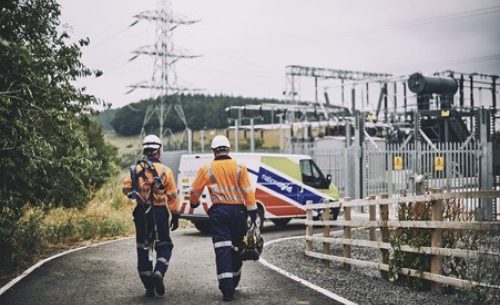

EDF PowerShift
A proof of concept approach / Supporting a decentralised energy model
EDF is Britain’s biggest generator of zero carbon electricity*, meeting around one-fifth of the country’s demand and supplying millions of customers with electricity and gas.
EDF is helping Britain achieve Net Zero by leading the transition to a cleaner, low emission electric future and tackling climate change. EDF generate low carbon electricity from eight nuclear power stations, more than thirty onshore wind farms and two offshore wind farms and operate one of Britain’s biggest battery storage units and thousands of EV charge-points.
* UK Fuel Mix disclosure information, published by the Government (BEIS) recognises electricity from wind, solar and nuclear fuel produces zero carbon dioxide emissions at the point of generation.
Background
This changing landscape has introduced an increase in market volatility and impact on the Grid. Businesses would need to be able to respond quickly and effectively to thrive. Many EDF customers were looking at, or had already implemented, onsite generation and battery storage for example. With this increasing level of connectivity being demanded by a growing number of energy generators and storage systems, this was adding even greater complexity to the ability to balance the network and keep it stable.
EDF however identified that this decentralised energy model could provide businesses with further opportunity in terms of balancing consumption and generation. If businesses were able to shift their energy consumption when UK electricity demand from the Grid threatens to exceed supply – and if there could be added incentive in the form of energy-saving and revenue earning potential through trading – this could help balance the Grid and deliver sustainable financial returns.
Enabling assets to be controlled to reduce or shift energy demand – the PowerShift platform would optimise, control and trade over 250MW of assets helping to keep the Grid balanced and enabling customers to earn revenues from flexibility services.

Benefits
- Maximise revenue from energy assets, supporting National Grid to balance energy during periods of high demand or stress.
- Supports Decarbonisation of the Grid and reduces need for high carbon generation.
- Enables business to manage high energy peaks (Triad periods – November –February)
- Enable assets to better respond to events and to generate revenue even when they are not required to deliver.
- Unlock untapped revenue from your existing assets and fulfil your sustainability goals.
“Capula supported us in our journey of growing PowerShift from an initial proof of concept to becoming the UK’s market leading platform for battery optimisation and trading services. Capula’s system integration knowledge was key at the early stages in advising us on use and validation of the PTC Thingworx IoT solution, which was achieved quickly via the proof of concept project. Subsequently they worked closely with us to setup a hybrid team of their in-house developers and external PTC experts which are now embedded in our enterprise agile team - alongside EDF and other suppliers. "
Tom Bowcutt
EDF PowerShift Product Owner
Capula solution
Capula was initially selected to support the proof of concept to deliver a scalable and sustainable monitoring and control capability that could be hosted in the Cloud, with a specific focus on the Asset Management System (AMS).
The AMS is responsible for the monitoring and control of distributed assets throughout the UK, powering them on and off in response to energy schedules and market supply commitments.
Having delivered a successful proof of concept in an accelerated 8-week timescale, Capula was selected as an integral part of the project to support the delivery and iterative development of the platform, including strengthening the functionality and gradual onboarding of more and varying energy asset types.






